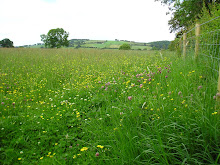


Thank heaven for a relatively warm and sunny month. This has helped the crucial task of killing Varroa mites and feeding. The Apiguard treatment (Thymol) remained in each hive for 4 weeks. Two days after it started a count was made of the average drop of mites per day during a 4 day period. Hive 1 dropped 3, Hive 2 dropped 1, and Hive 3 dropped 9. The average of 9 in Hive 3 is a little high but hopefully the treatment will sort them out. If conditions prove right then they will be treated with Oxalic Acid in about December when there is no brood. The bees keep warm in winter by forming a cluster. No eggs are laid during that period so it is safe to administer the acid which can harm new brood.
The bees have been working really hard to take advantage of the warmth that has ensured a continuing supply of pollen and nectar. Pic shows a worker on our Nicotiana flowers. She has a heavy load of pollen in the basket on her hind legs.
An inspection of the hives on the 19th revealed good supplies of capped stores in each hive but nevertheless we need to feed them to assist in building up the stores that they will need early next season when they start to rear brood. There is usually a time when they are raising the new season bees but there is little nectar so they need good stores to see them through. The feed s given in the form of sugar syrup in the proportions 2 parts sugar to one part syrup. Bees will drown if they land in water or syrup, they need to have their feet on dry land whilst feeding or drinking. The round feeder shown in the pic enables the bees to come up through a hole in the bottom, then down the side of the central beaker (it has a ribbed surface for grip). The line of bees feeding at the bottom can just be seen through the opaque sides. They convert the syrup into honey which they store in cells in the comb. When they have reduced the water content sufficiently to prevent fermentation they cap the cells after which the honey will last in good condition until they need it.

































